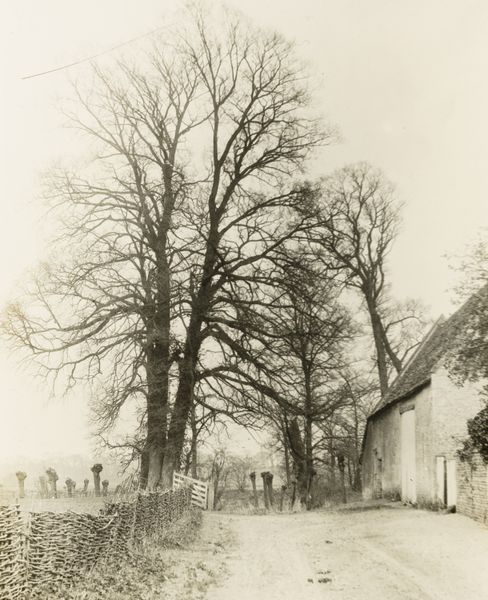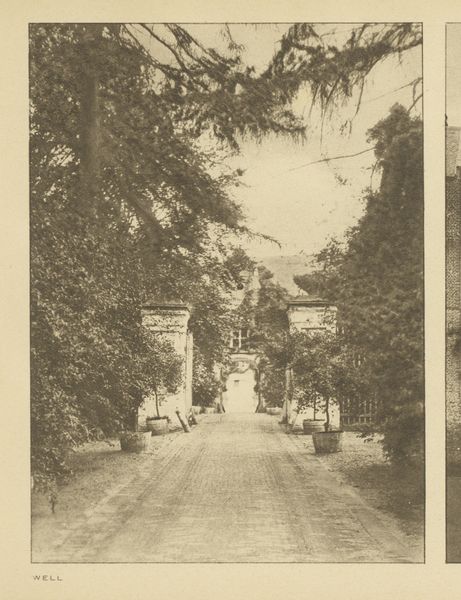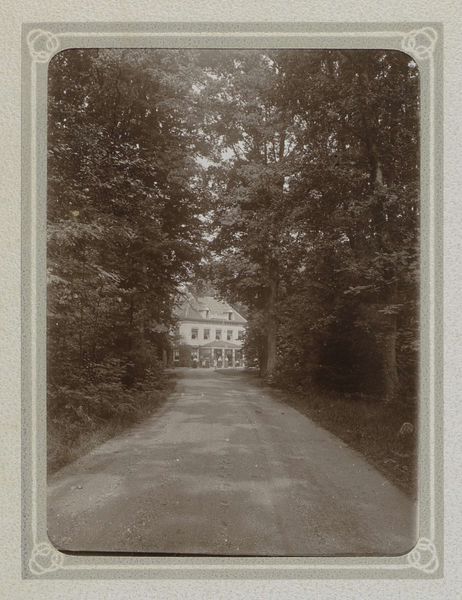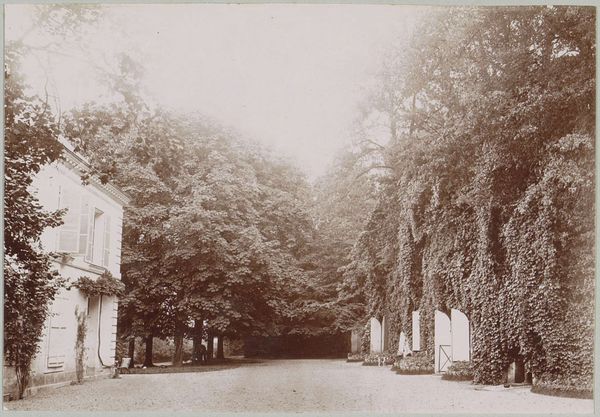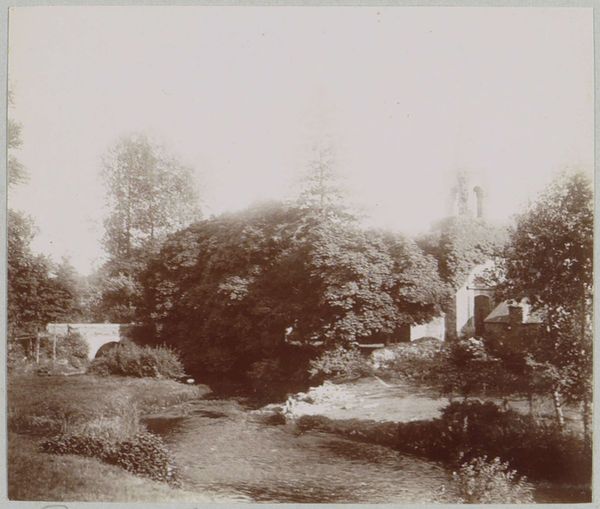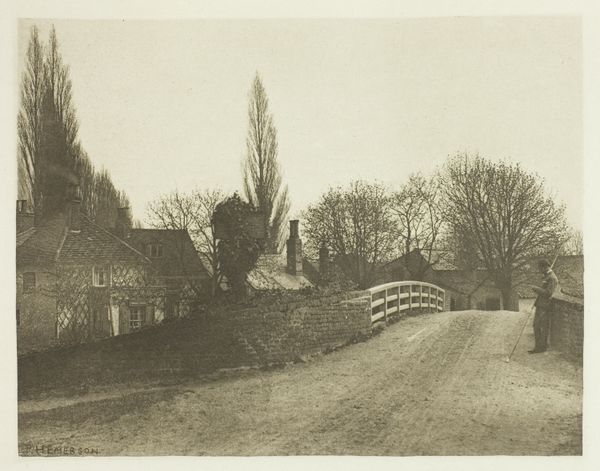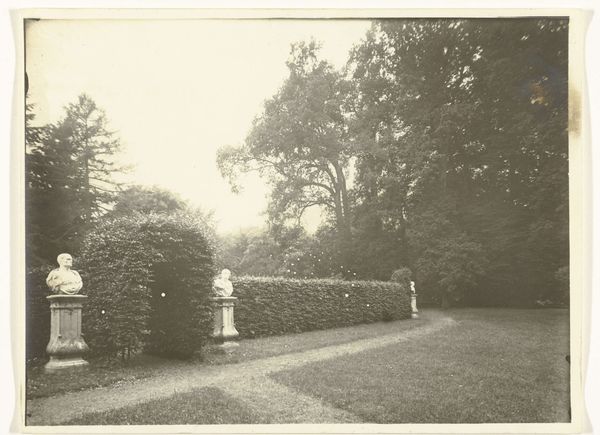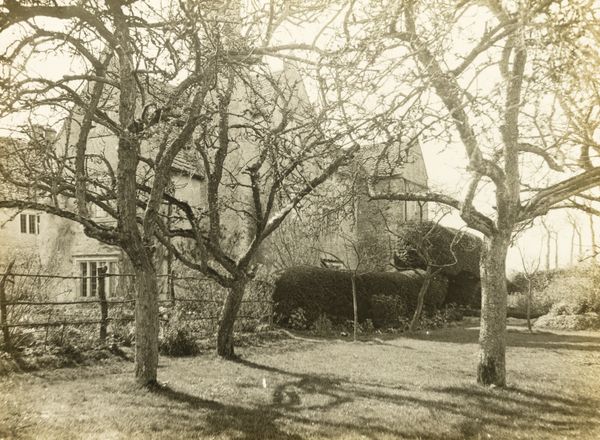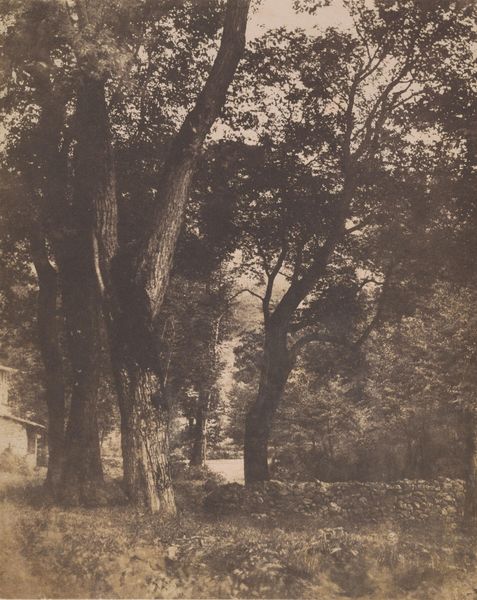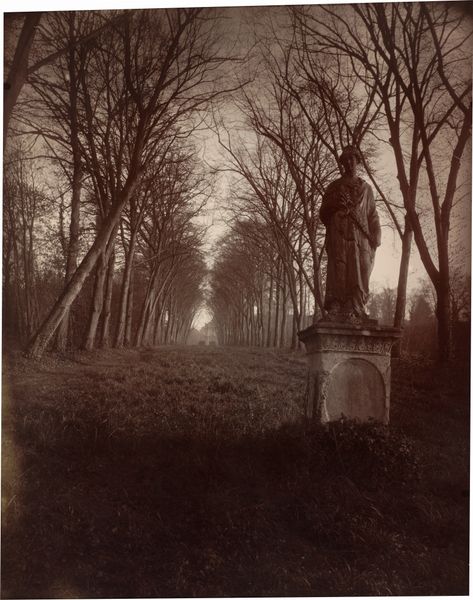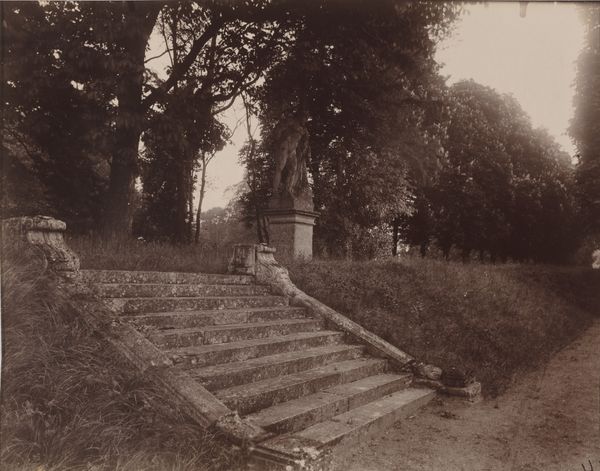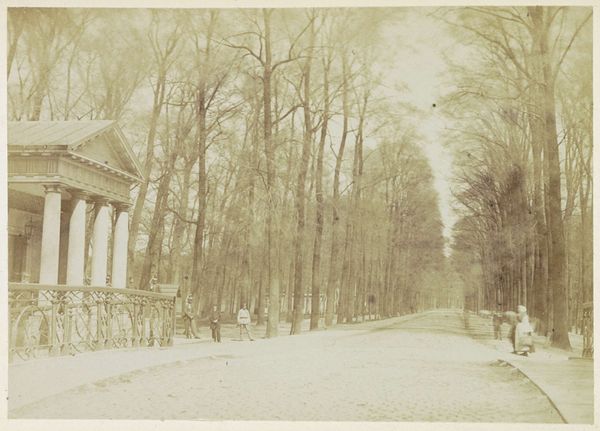
Dimensions: 8.2 × 8.2 cm
Copyright: Public Domain
Editor: We're looking at Frederick H. Evans's "Kelmscott Manor: In the Garden," a gelatin silver print from 1896. It’s quite an intimate scene, a quiet pathway. What do you see in the composition and its materiality that strikes you? Curator: Initially, observe the tonal range. The photograph thrives on subtle gradations of grey, constructing depth and volume not through sharp contrasts but delicate shifts in light. Consider also how the rectilinear form of the building juxtaposes against the organic lines of the path and trees, creating a visual tension that arrests the eye. Editor: I hadn't noticed that tension at first, but now it feels so clear. Does the gelatin silver print contribute a unique quality to the piece? Curator: Absolutely. The choice of the gelatin silver print offers exceptional detail and luminosity, permitting the artist to capture nuances of texture. Examine closely the stone wall, or the texture of the pathway—this method yields clarity that underscores the photograph’s realistic yet romanticized vision. Editor: I understand that romanticism plays a part. It seems that the framing directs your eye through the pathway. How does this work on the viewer's perception of space? Curator: Indeed, the deliberate framing focuses the perspective. The path operates almost like a structural spine leading the viewer through clearly defined planes, starting with the immediate garden and culminating at the implied vanishing point in the background, creating an undeniable sensation of depth within the bidimensionality. Note, it almost constructs an allegorical representation, perhaps referencing temporality. Editor: It’s incredible how much can be gleaned from just looking at the photographic properties. Thank you! Curator: A painting is, at heart, a system. Grasp the structure, and meaning will reveal itself.
Comments
No comments
Be the first to comment and join the conversation on the ultimate creative platform.
